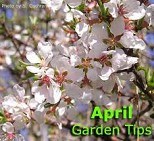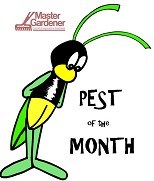Amaryllis bulbs are sold after they have gone through a dormant period. Once the bulb is planted and watered it will quickly begin to send out leaves and one or more flower stalks. The key to success with these plants is selecting a quality bulb. If buying from a garden center or flower shop, you may be able to select the bulb from a bin. Look for large, firm bulbs with light brown roots. If you are buying a pre-potted plant it can be harder to tell the quality of the bulb. If you can get to the bulb, check for firmness and note the size of the bulb. If you can’t see the bulb, remember that as a general rule bargain bulbs will be smaller and will yield fewer flowers.
If you have to plant the amaryllis bulb, select a pot that is only one to two inches in diameter larger than the bulb. The pot does not need to be very deep but it should have drainage holes in the bottom. Place a layer of soil on the bottom of the pot and then situate the bulb so that when the pot is filled to about one inch from the top, one-half of the bulb will remain exposed. It is important for the health of the bulb not to bury it more than one half. Sometimes bulbs will come with a hug mass of roots. If the roots do not fit well into the pot, it is okay to trim enough back to make planting easier. The bulb will continue to make new roots.
Once you have lightly pressed potting soil into the pot, water it until water comes out of the holes in the bottom of the pot. If the soil settles too much during watering, add a little more now. Then set the plant in a warm (70-75 degrees F) place. It may take a week or two for growth to appear. During this time let the soil dry out a little bit so the bulb doesn’t rot. Then, once growth begins to appear, water the bulb frequently enough to keep the soil damp but not soaking wet. A nice way to do this is to set the plant on a saucer, water until the plant is sitting in a little pool, let it sit for five minutes and then dump out the extra water from the saucer.
When watering, you can apply a liquid fertilizer according to the directions on the label. Fertilizing will promote vigorous growth.
Once the plant starts to send up flower stalks, rotate it each day to keep them straight. They will lean towards the window or other light source. If the plant is moved to a cooler (65-70 degrees F) location the flowers will last longer. Once the flowers are finished cut the stalk a few inches above the foliage and let the foliage continue to grow. If you want to make the plant bloom again next year, keep the foliage alive as long as possible and continue fertilizing. This could be through the summer in most cases. Next fall, if the plant has not gone dormant, begin withholding water to induce dormancy. After the leaves turn brown, store the bulb at 50 to 55 degrees F for eight to ten weeks and you can force it again for the holidays. If your bulb flowered very heavily it may take two years before the bulb builds up enough strength to flower again so do make sure to keep up with the fertilize.
Source: Town & County, CCE Fulton-Montgomery, Nov-Dec 2007




